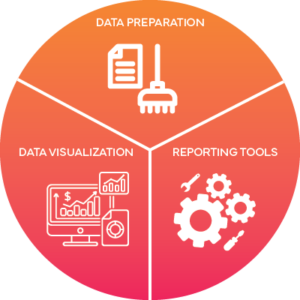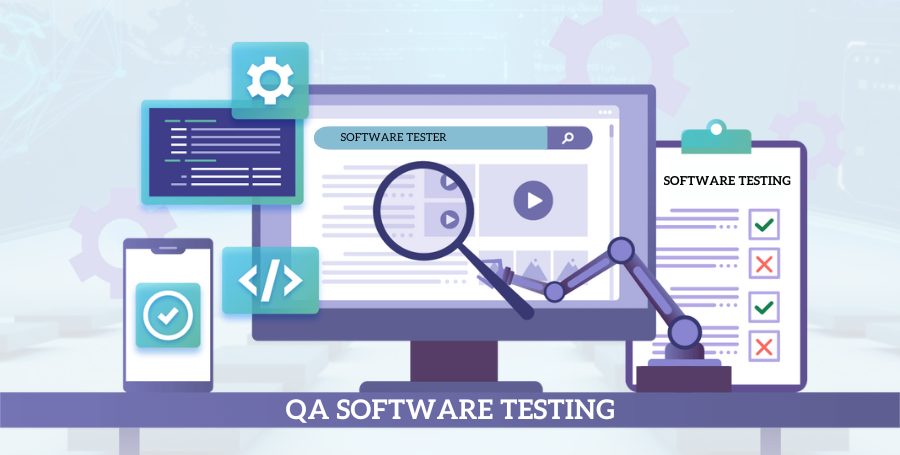Warning: Undefined array key "color_palette_1" in /home/aegisinfowayscom/public_html/wp-content/plugins/joli-table-of-contents/core/Engine/TOCBuilder.php on line 316
Warning: Undefined array key "color_palette_2" in /home/aegisinfowayscom/public_html/wp-content/plugins/joli-table-of-contents/core/Engine/TOCBuilder.php on line 316
Warning: Undefined array key "color_palette_3" in /home/aegisinfowayscom/public_html/wp-content/plugins/joli-table-of-contents/core/Engine/TOCBuilder.php on line 316
Warning: Undefined array key "color_palette_4" in /home/aegisinfowayscom/public_html/wp-content/plugins/joli-table-of-contents/core/Engine/TOCBuilder.php on line 316
Warning: Undefined array key "color_palette_5" in /home/aegisinfowayscom/public_html/wp-content/plugins/joli-table-of-contents/core/Engine/TOCBuilder.php on line 316
Warning: Undefined array key "color_palette_6" in /home/aegisinfowayscom/public_html/wp-content/plugins/joli-table-of-contents/core/Engine/TOCBuilder.php on line 316
Understanding self-service business intelligence (BI)
Today’s is a data-centric society, where organizations irrespective of their sizes are working towards harvesting value from the seas of data using an effective & efficient manner. Conversely, creating the reports and analyzing the data often takes a lot of time and resources meaning that traditional business intelligence (BI) solutions require skilled professionals. Nevertheless, the onset of self-service analytics has transformed how organizations handle data analysis.
On the other hand, self-service BI allows non-technical users to access and analyze data without IT or data professionals. When self-service BI solutions are developed to enable all organizational users to independently make data-driven decisions, POWER BI solutions rely on intuitive and user-friendly interfaces.
The Rise of Self-Service Analytics
For the past few years, self-service analytics has gained increasing popularity as organizations appreciate the benefit of providing data analysis to their employees. Data analysis was traditionally done in the old way where an IT department took all data queries and reports. But, most of the time this method made it inconvenient and slowed down the release of important information necessary for decision making.
By adopting a self-service analytics approach, an organization may shift the responsibility of data analysis to departments or individual employees. Such decentralization of data analysis not only lightens the burden off IT departments but also facilitates faster and agile decision-making in the organization. This is a self-service interface through which users can create their own views, analysis and reports on data without the need for constant interaction with IT.
The importance of self-service BI in today’s business landscape
With a wealth of data in modern business, coupled with extremely fast decision-making requirements self-service BI has become more of a necessity than a luxury. Here are some key reasons why self-service BI is crucial for organizations today:
- Empowering users: It should be noted that the power of data analysis on end users, where self-service BI solutions enable end users to explore and analyse Dana by themself. This enables all people within an organization to determine the next course of action from just-in-time information.
- Reducing dependency on IT: Self-service BI solutions facilitate the users to access and analyze data without dependence on IT or data professionals, therefore relieving them of the burden and enabling more constructive uses of their productive time.
- Faster decision-making: In the self-service BI, users can view enable at times for report creation. This consequently increases the rate at which decisions are made; users do not have to wait for IT to generate reports or reply to queries about data.
- Driving data literacy: By encouraging users to become regular consumers of data, self-service BI solutions foster data literacy within an organization. This results in a more data-centric culture wherein decisions are fact-based.
- Enabling data exploration: With self-service BI tools, users have the opportunity to navigate through data and come up with trends or revelations. Exploratory analysis of data can open new possibilities or reveal the risks that could have remained invisible
Advantages of self-service BI solutions
There are several benefits associated with organizations implementing self-service BI solutions. Here are some key benefits:
- Increased agility: Because the self-service BI solutions can be implemented quickly, and are thus flexible enough to respond over time to changes in markets or internal needs of organizations. Ad-hoc reports and on-the-fly visualizations let users make decisions faster and perform more agile operations.
- Cost savings: Self-service POWER BI solutions can help organizations save costs by reducing the dependency on IT and data professionals. Besides, it enables alternative allocation of IT resources to more strategic initiatives and reduces the dependency on external data analysis services.
- Improved data accuracy: Self-service BI allows users to go directly to the data thus minimizing the possibility of misinterpretation or errors included during reporting. This results in higher data integrity and supports action on credible information.
- Enhanced collaboration: These self-service POWER BI solutions offerings also often include capabilities that allow the sharing of reports, visualizations, and information with others in an organization. This facilitates teamwork and helps to share information within the organization.
- Scalability: Self-service BI solutions allow for scalability with the level of data and analytical needs within an organization. As the data volume increases or the complexity of analysis rises, self-service BI tools are capable of adjusting to these changes quite easily, and only minor adjustments to infrastructure may be needed.
Common challenges in implementing self-service BI
While self-service BI brings significant benefits, organizations may encounter challenges during the implementation process. Here are some common challenges and how to overcome them:
- Data governance: If necessary, appropriate data governance should be implemented so that self-service BI does not cause discrepancies and errors. Data integrity can be maintained only if clear data governance policies are established with well-defined data access rights and validation mechanisms.
- User adoption: Bias can be created since some of the users may lack the data literacy or fear making mistakes while using self-service BI. This challenge can be mitigated by offering intuitive interfaces and sufficient training and support to foster user adoption.
- Data security: Data security measures in self-service business intelligence solutions. Therefore, rigorous authentication and authorization mechanisms need to be implemented; sensitive information encrypted, as well as the definition of access controls for data safety and regulation compliance with privacy guidelines.
- Data quality: However, the use of self-service BI depends on the quality of data being provided. However, to access reliable and accurate data through the self-service BI tools’ organizations may have complete data cleansing, and integration of their systems.
- Change management: This shift in the organization’s culture and processes is necessary to implement self-service BI. To achieve successful adoption and facilitate resistance to change, any business that requires various changes requires effective change management strategies which can be developed through clear communication, training programs, and executive sponsorship.
Key features and functionality of self-service BI tools
Self-service BI tools offer a range of features and functionalities that allow users to analyze data independently. Here are some key components to look for when selecting a self-service BI solution:
- Intuitive user interface: A user-friendly interface is crucial for self-service BI tools. The interface should be intuitive and require minimal technical expertise to navigate and perform data analysis tasks.
- Data visualization capabilities: Users should be able to choose among charts, graphs, and dashboards as visualization techniques in self-service BI tools for effective understanding and communication of insights.
- Data connectivity: Self-service BI tools should have the capability to link to diverse data sources, which include databases, spreadsheets, and cloud storage. The interface should provide the user with the ability to access and analyze data from various sources.
- Data exploration and discovery: Data exploration in self-service BI tools should be implemented through features including filtering, drill-down, and data discovery. As a result of these characteristics, users can reveal certain patterns, trends, and insights that might not be noticeable at first sight.
- Collaboration and sharing: These tools should enhance the ability of users to collaborate through sharing reports, visualizations, and insights produced. The use of collaboration features to enhance knowledge sharing and teamwork.
- Mobile accessibility: Mobile accessibility is a must-have for self-service BI tools in today’s mobile-driven world. The availability of data on smartphones and tablets should be improved so that users can analyze them to make decisions based on the obtained findings.
Best practices for implementing self-service BI in your organization
Implementing self-service BI requires careful planning and execution. Here are some best practices to consider:
- Define clear objectives: Clearly define the goals and objectives of implementing self-service BI in your organization. Identify the key business areas that can benefit from self-service analytics and align the implementation strategy with the overall organizational strategy.
- Start small and scale: Begin with a pilot project or a small group of users to test the self-service BI solution. Learn from their feedback and iterate on the implementation before scaling it across the organization.
- Provide training and support: Provide users with extensive training programs to equip them with adequate skills for using the self-service BI tools. Continue support using user forums, documentation, and a helpdesk to counter any issues users may face.
- Promote data literacy: Drive a data literacy culture within the organization, where users understand that future decisions are driven through the analysis of data and also provide resources for them to enhance their skills in analyzing data.
- Monitor and measure success: First, develop key performance indicators (KPI) to guide your self-service BI implementation. Continuously monitor and analyze these KPIs, look for areas of improvement, and make decisions based on data regarding the self-service BI solution.
Choosing the right self-service BI solution for your organization
When choosing a self-service BI solution for your association, reflect on the following factors:
- Ease of use: Select a solution that has an easy-to-use and user-sensitive interface that allows users of any technical level to access and analyze the data themselves.
- Scalability: Make certain that the chosen self-service BI solution can accommodate your organization’s increasing data and analytical needs. Take into account factors including volume of data, analysis complexity, and projected number of users interacting with the solution.
- Data connectivity: Assess the solution’s capability to integrate with diverse data sources – databases, spreadsheets, and cloud storage. It should provide the relevant data sources for your organization.
- Security and compliance: Therefore, a self-service BI solution ought to be concerned with issues of data security and compliance. Some of the attributes to look for include robust authentication and authorization, data encryption, as well as adherence to privacy regulations.
- Vendor support: Consider the vendor’s reputation, track record, and support level. Evaluate their responsiveness to support requests and commitment to ongoing product development and updates.
Conclusion
Self-service BI solutions have transformed the way organizations approach data analysis, empowering users at all levels to make data-driven decisions independently. By reducing the dependency on IT, enabling faster decision-making, and promoting data literacy, self-service POWER BI solutions democratize data and provide organizations with a competitive edge. However, implementing self-service BI requires careful planning, addressing challenges, and choosing the solution for your organization’s unique needs. By following best practices and considering key factors, organizations can successfully implement self-service BI and unlock the full potential of their data.









